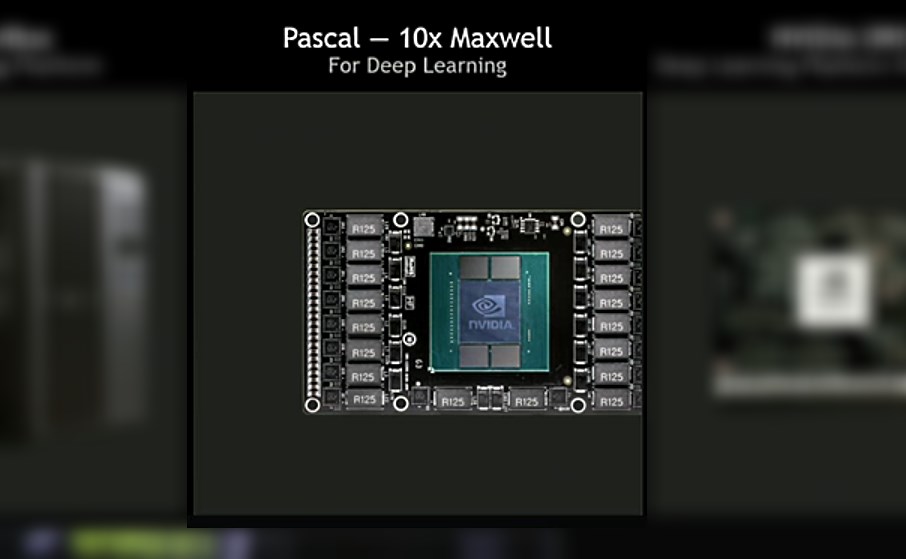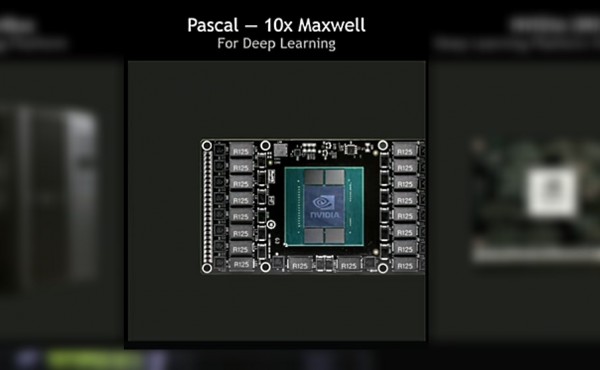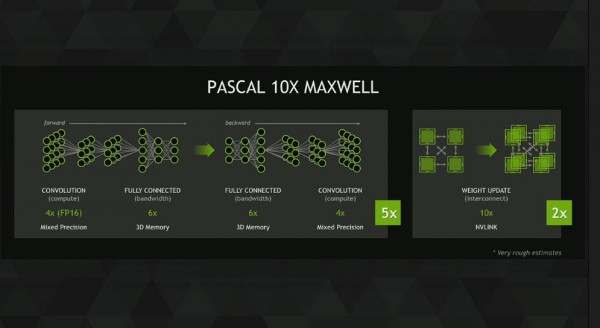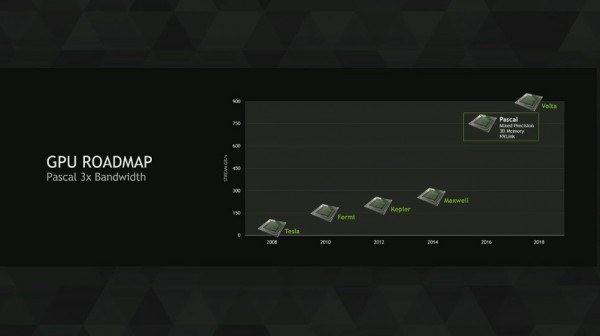Apart from announcing the availability of its brand new GeForce GTX Titan X at the company’s on-going GPU Technology Conference (GTC) 2015, NVIDIA has also shared some information regarding its next generation GPU architecture called Pascal. Scheduled for release in 2016, the company claimed that the new architecture is 10 times faster than the existing Maxwell architecture in terms of deep learning capabilities which is a major theme at this year’s GTC.
Pascal was originally announced during GTC 2014 and the significant leap in performance is apparently made possible through several factors. One of them is Pascal’s ability to perform mixed-precision computing. Specifically, Pascal GPUs are able to compute at 16-bit floating point accuracy at double the speed of 32-bit floating point accuracy.
When it was revealed last year, NVIDIA stated that Pascal will also feature stacked memory chips or also known as 3D memory. At this year’s event, the company’s CEO and co-founder Jen-Hsun Huang pointed that the feature will allow the new architecture to have more than two times worth of memory bandwidth as compared to Maxwell. It will also feature up to 32GB worth of memory which is almost three times more than its newly launched flagship card Titan X.
Just like at last year’s GTC, Jen-Hsun once again pointed out that Pascal will feature NVIDIA’s GPU high-speed interconnect called NVLink. Designed to allow data move faster between GPU and CPU, it will also allows more GPUs to be connected together as compared to the existing limit of 4 GPUs using SLI.
Also visible on the presentation slide is another upcoming architecture called Volta. Jen-Hsung didn’t discuss about it onstage but clearly, Volta will be even more powerful than Pascal and it is scheduled for release in 2018.
[Source: NVIDIA GTC 2015’s Opening Keynote]
Follow us on Instagram, Facebook, Twitter or Telegram for more updates and breaking news.






